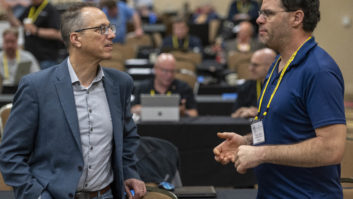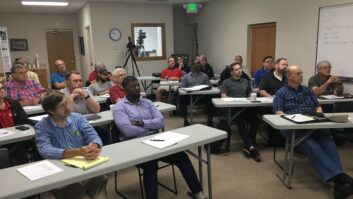HCJB’s Elkhart Engineering Center is getting a new name.
The organization says the new title – “The HCJB Global Technology Center” – reflects a change in the organization name itself (from HCJB World Radio to HCJB Global), as well as the center’s expanding mission.
The center assists Christian radio ministries. It is part of an association of broadcast organizations and is backed by Far East Broadcasting, SIM International, HCJB Global, Trans World Radio and others. Its director is David Russell.
The engineering center started out as a way to design and build specialized, cost-effective shortwave transmitters, according to the organization’s Web site.
“The first time a group of HCJB Global engineers accepted an offer from the Moore family to work in Elkhart, Ind., they were tasked to build a 500,000-watt shortwave transmitter capable of penetrating any Russian jamming effort,” it states. “In 1975, missionaries began setting up offices, a machine shop and an assembly area at the Crown International plant in Elkhart, Ind.” HCJB Global and Crown International were connected then through Crown founder Clarence Moore, who had served with HCJB in Ecuador as chief engineer.
In the 1980s the HCJB Global Technology Center formed at Crown International, building 100,000-watt shortwave transmitters for ministry partners. It now deals in shortwave but also R&D, training and tech support for FM transmitters, radio automation systems, satellite distribution and antennas. In recent years the technology center also has developed a fixed-tuned, solar-powered radio that can be pre-tuned to pick up specific Christian stations, and engineers have been involved in the development of gear to implement Digital Radio Mondiale standards.
Russell said in announcing the name change that the word “technology” was chosen over “engineering” because it is more encompassing: “It can include technical support, training, maintenance and installation as well as design and development. For us it may eventually include support of medical and community development outreaches, in addition to broadcasting.”












